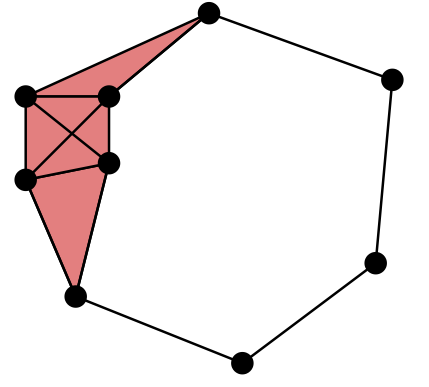Vietoris–Rips Complexes¶

Dionysus can compute Vietoris–Rips complexes. Given a point set \(P\), a Vietoris–Rips complex consists of all those simplices whose vertices are at pairwise distance no more than \(r\), \(VR_r(P) = \{ \sigma \subseteq P \mid \forall~u,v \in \sigma, \| u - v \| \leq r \}\).
fill_rips() computes Vietoris–Rips filtrations (up
to a specified skeleton dimension and distance \(r\)). It accepts points as
NumPy arrays, following the standard convention
that rows of a 2-dimensional array are interpreted as points in Euclidean
space:
>>> import numpy as np
>>> points = np.random.random((100,2))
>>> f = d.fill_rips(points, 2, .3)
>>> print(f)
Filtration with 5974 simplices
>>> for s in f:
... print(s)
<0> 0
...
<9,61,92> 0.299856
<9,72,92> 0.299856
<9,82,92> 0.299856
fill_rips() also accepts condensed distance matrices
(linearized lower triangular part of a symmetric matrix):
>>> from scipy.spatial.distance import pdist
>>> dists = pdist(points)
>>> f = d.fill_rips(dists, 2, .3)
>>> print(f)
Filtration with 5974 simplices
SciPy provides a helper function squareform to convert between redundant square matrices (\(n \times n\)) and condensed matrices (vectors with \({n \choose 2}\) elements).
>>> from scipy.spatial.distance import squareform
>>> sq_dist = squareform(dists)
>>> print(sq_dist.shape)
(100, 100)
>>> print(squareform(sq_dist).shape)
(4950,)